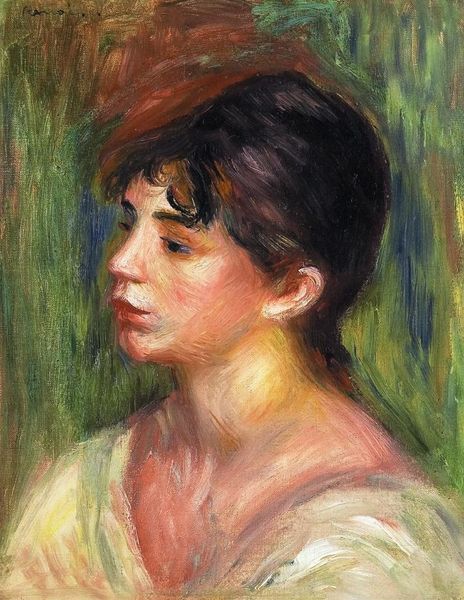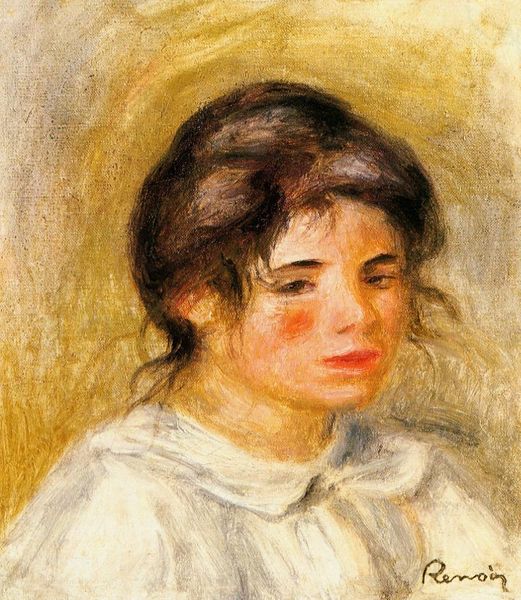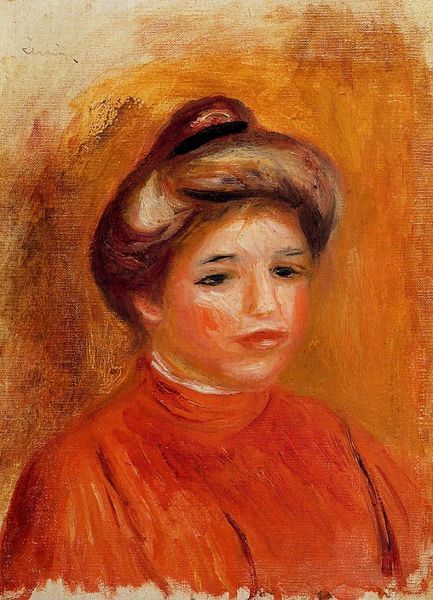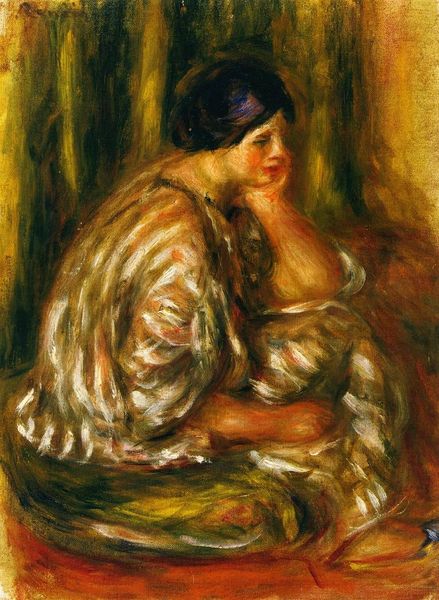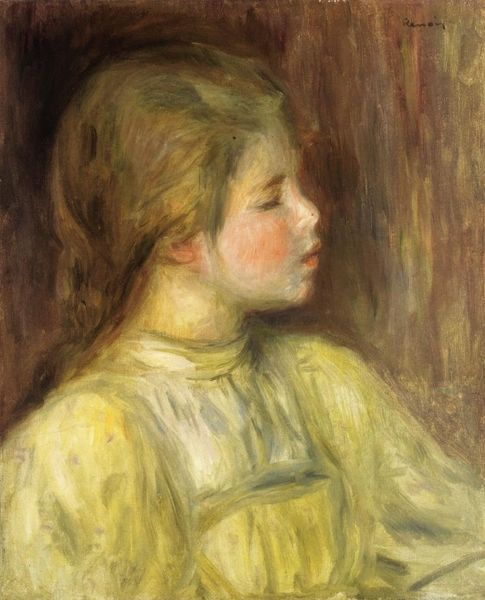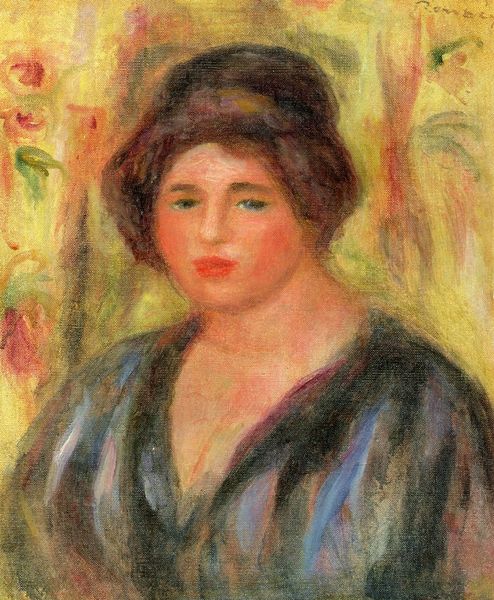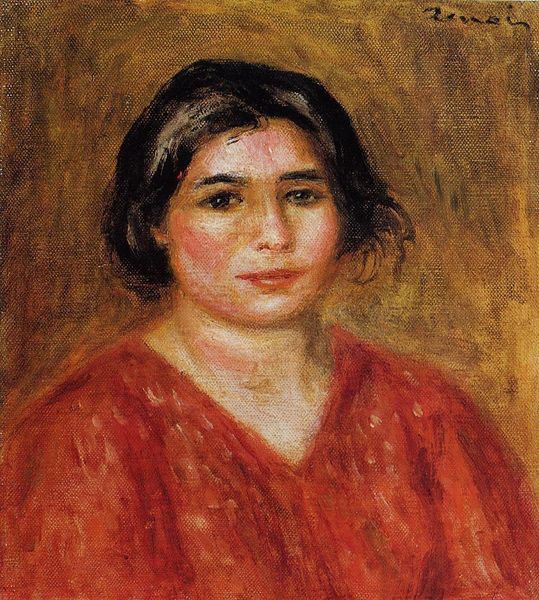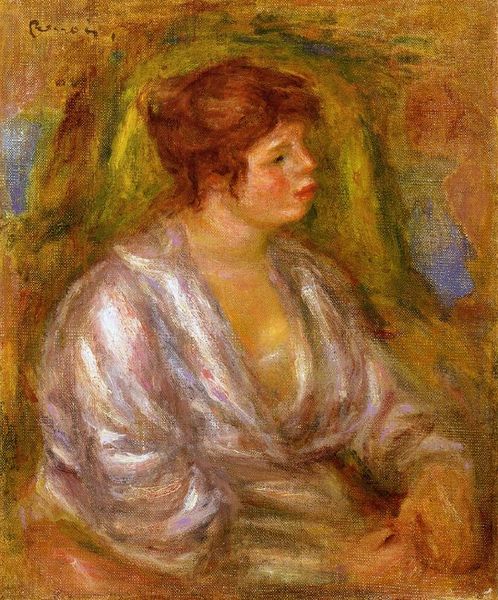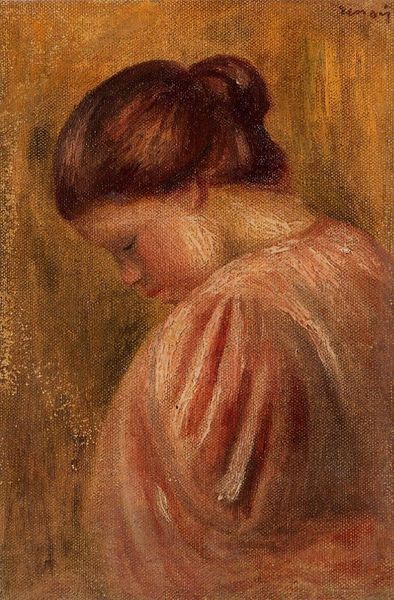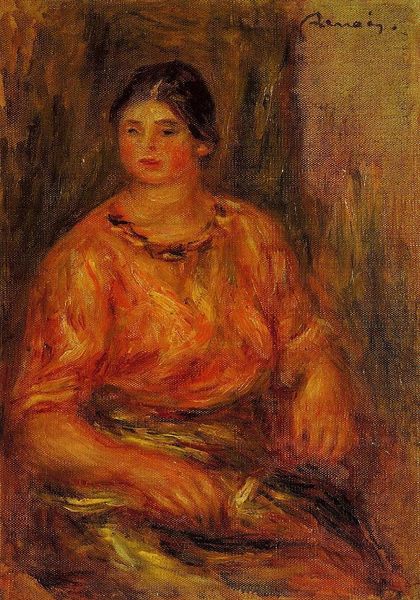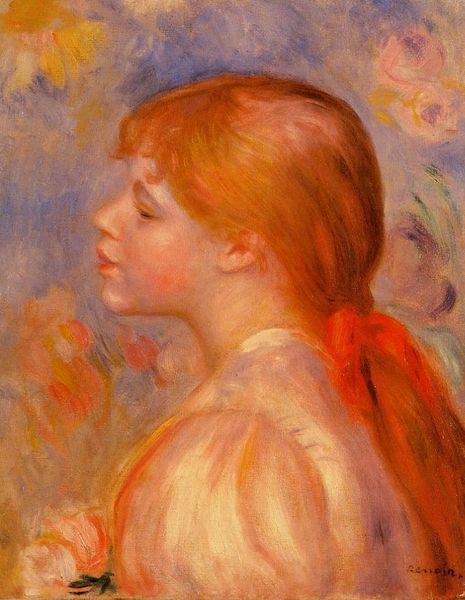
#
face
#
portrait
#
portrait reference
#
portrait head and shoulder
#
animal portrait
#
animal drawing portrait
#
portrait drawing
#
facial portrait
#
lady
#
portrait art
#
fine art portrait
#
digital portrait
Copyright: Public domain
Editor: We're looking at Renoir's "Portrait of a Young Girl" from 1912, held in a private collection. It’s an intimate portrayal, focusing on the girl’s downward gaze. It's incredibly soft and delicate, almost ethereal. What do you see in this piece, particularly regarding Renoir's technique and its historical context? Curator: This painting reveals a lot about Renoir's later production. Consider the blurring of lines between "high art" portraiture and the labor involved in its creation. The brushstrokes themselves, visible and expressive, disrupt the illusion of a perfectly rendered likeness. Are we meant to see the sitter, or the *process* of painting a sitter? Editor: That’s interesting. It does seem more about the act of painting than capturing a likeness. Curator: Exactly! And what materials would have been available, and *affordable*, to Renoir? How does that impact the overall image? Also consider Renoir's own social positioning. Commissioning such portraits spoke to certain levels of affluence at that moment. It's about more than the subject; it reflects the dynamics of artistic production and consumption within that society. How do you see his style fitting, or disrupting, the artistic norms of the early 20th century? Editor: It's definitely not as formally posed as earlier portraits, there is a certain informality, but that the piece still exists, its continued value, does signal certain societal norms and class markers. Curator: Precisely. Think of the artwork as a record of labor and a product of material conditions. Considering this changes our appreciation, doesn’t it? Editor: Definitely. It shifts the focus from just the aesthetic to a broader understanding of its making and reception. Curator: And the social fabric in which both occurred. Editor: I'll definitely look at art with a more material eye moving forward! Thank you.
Comments
No comments
Be the first to comment and join the conversation on the ultimate creative platform.
